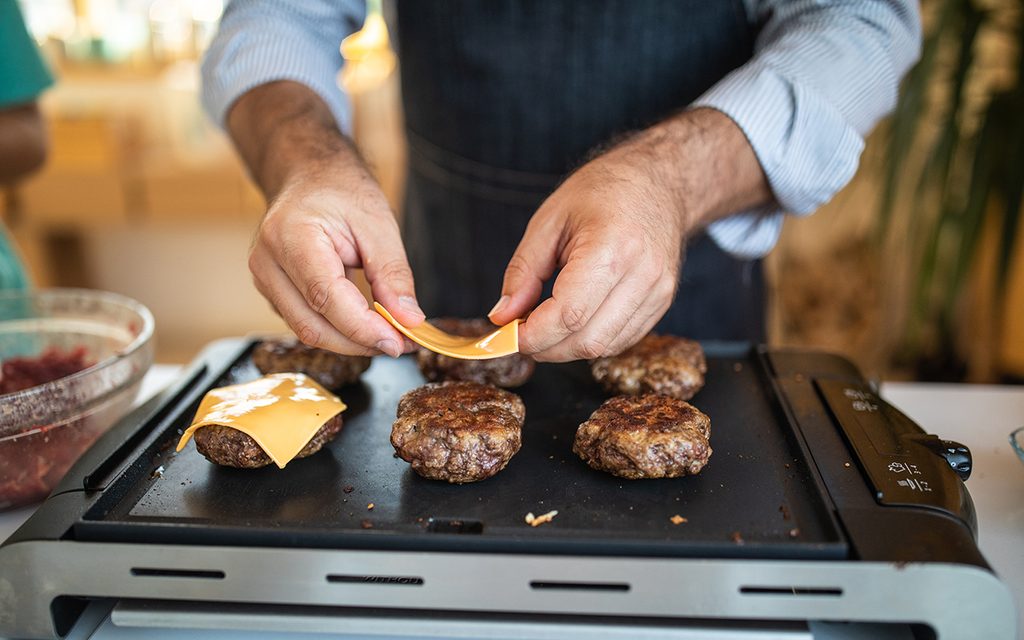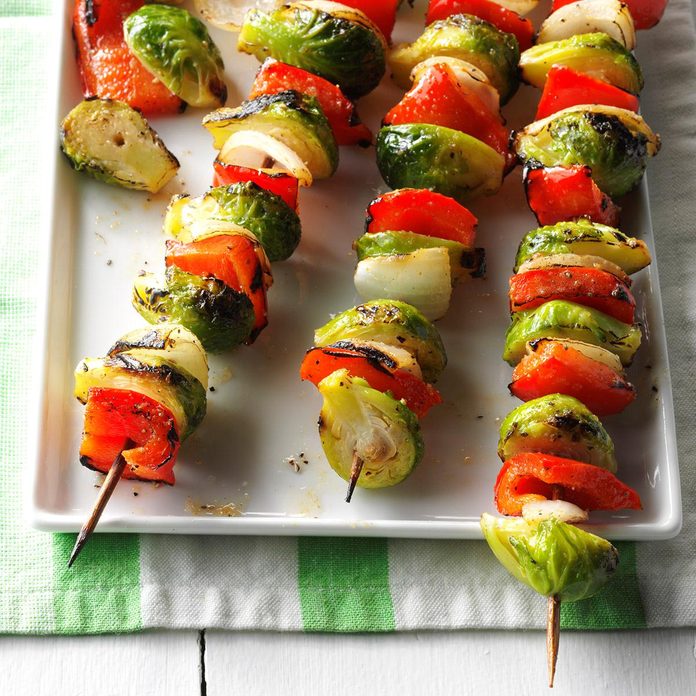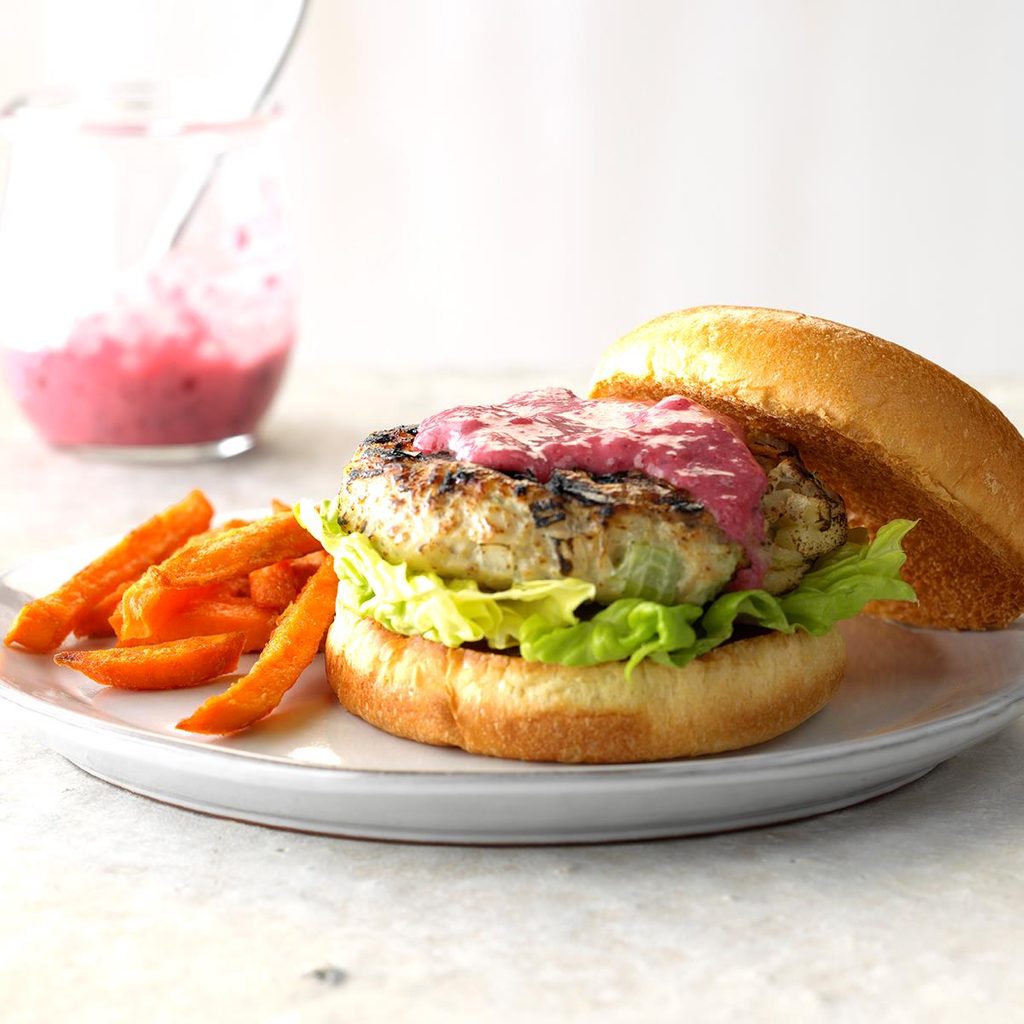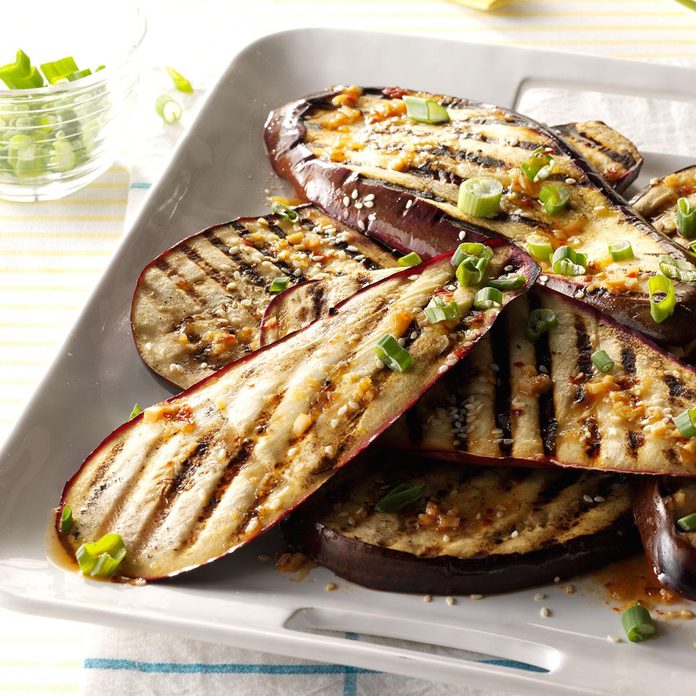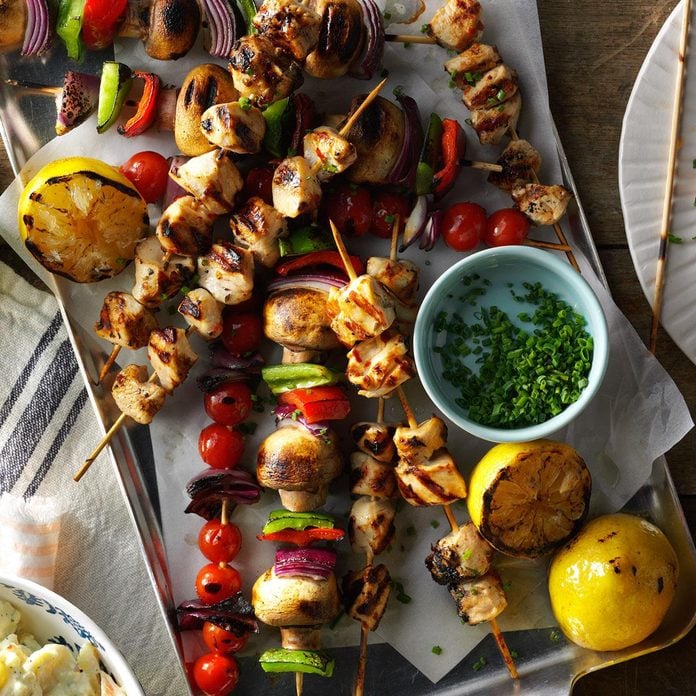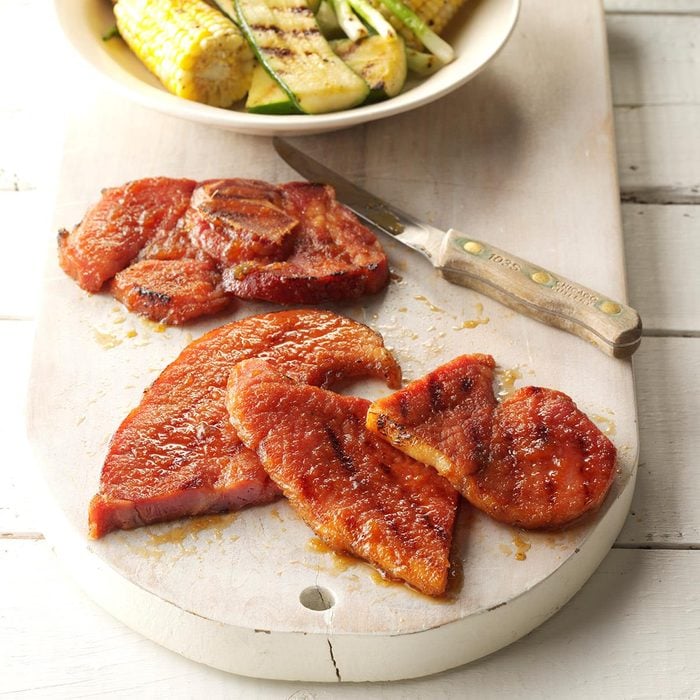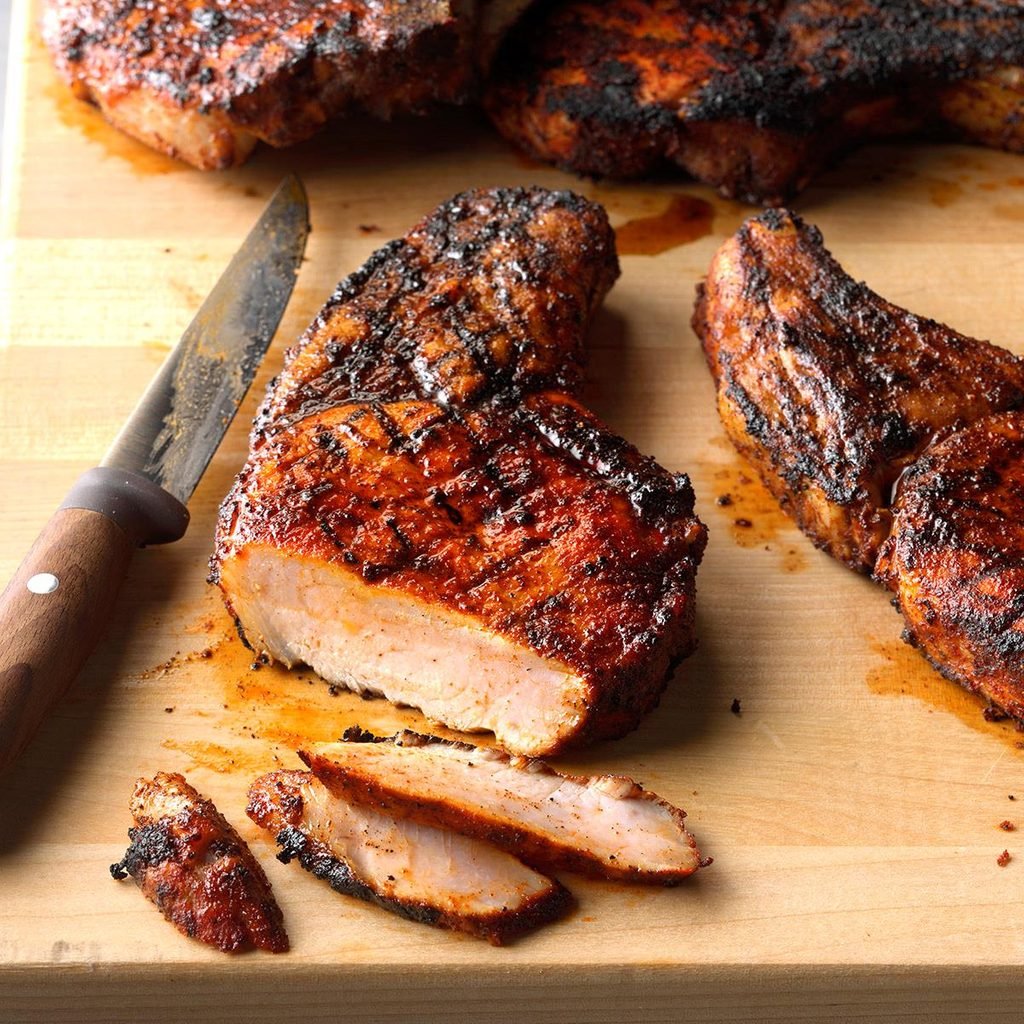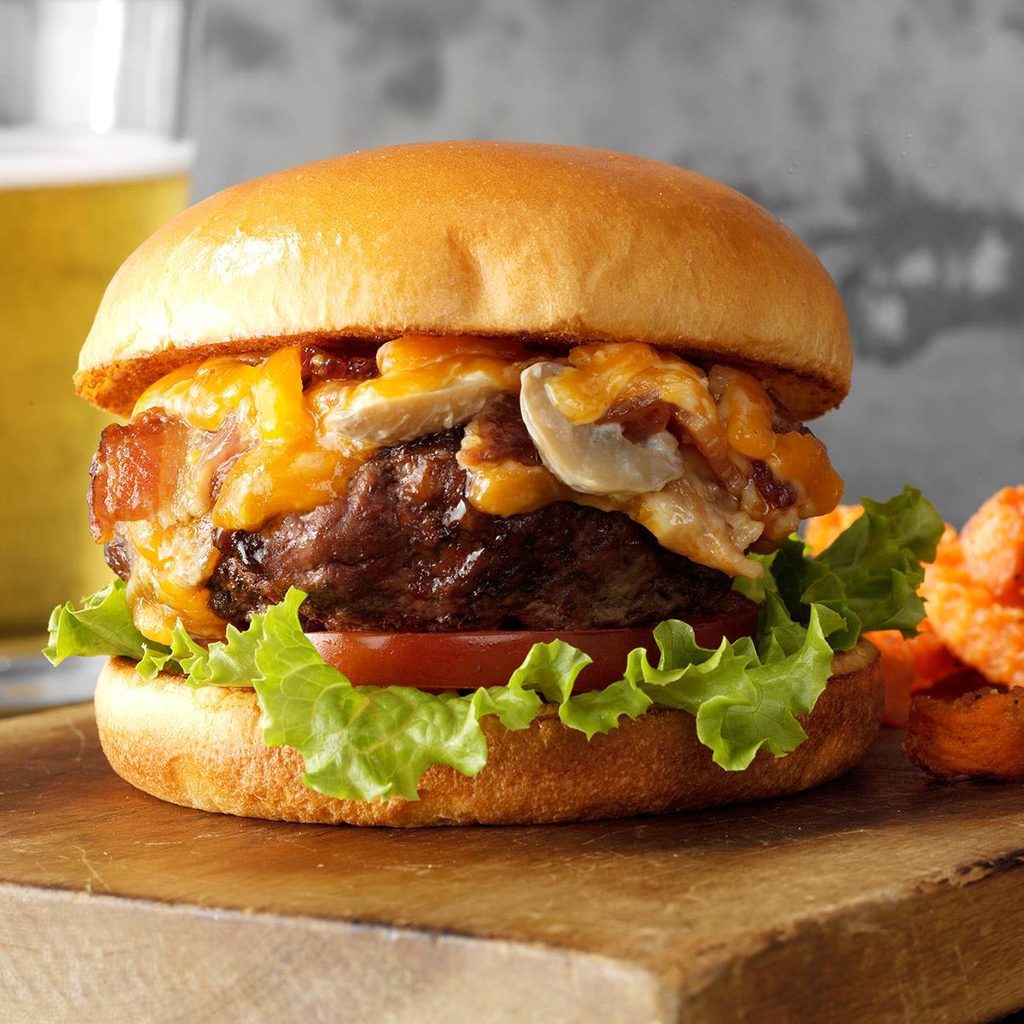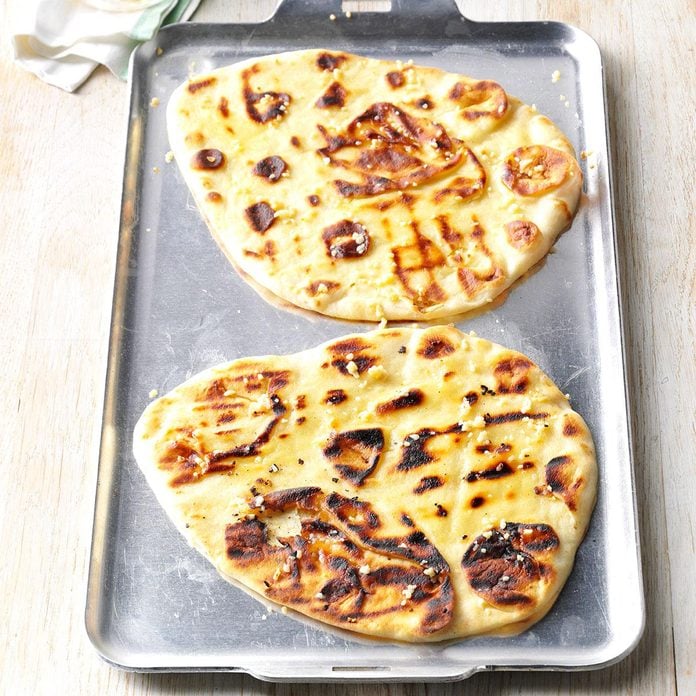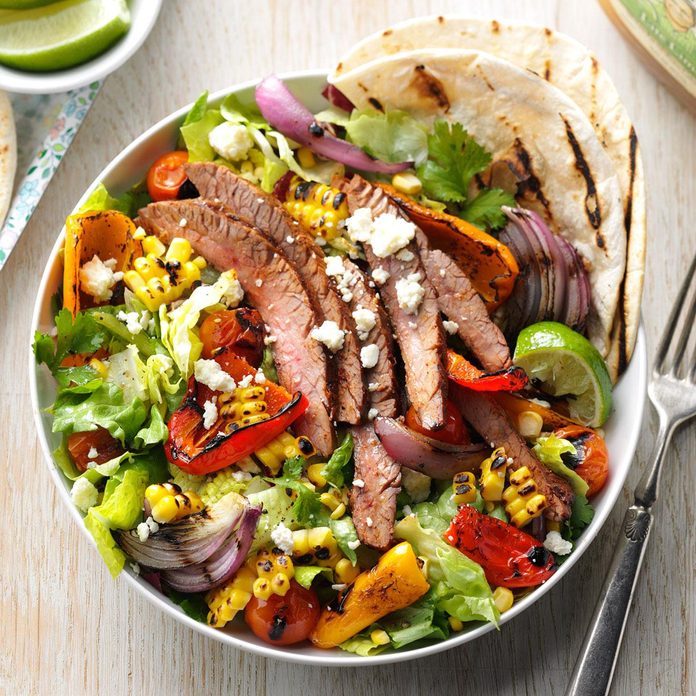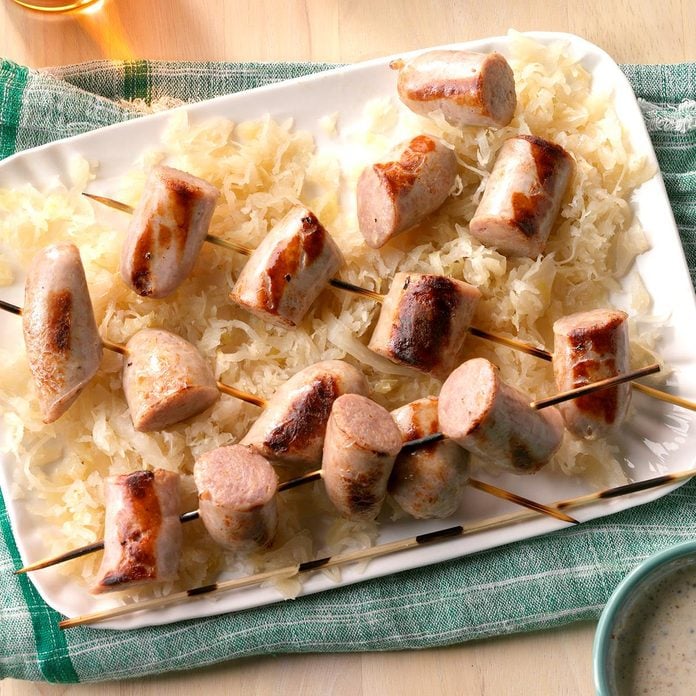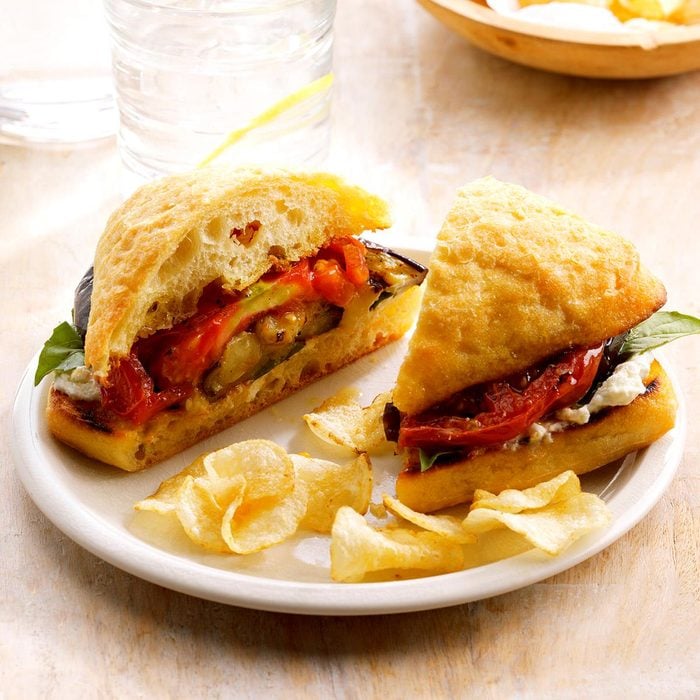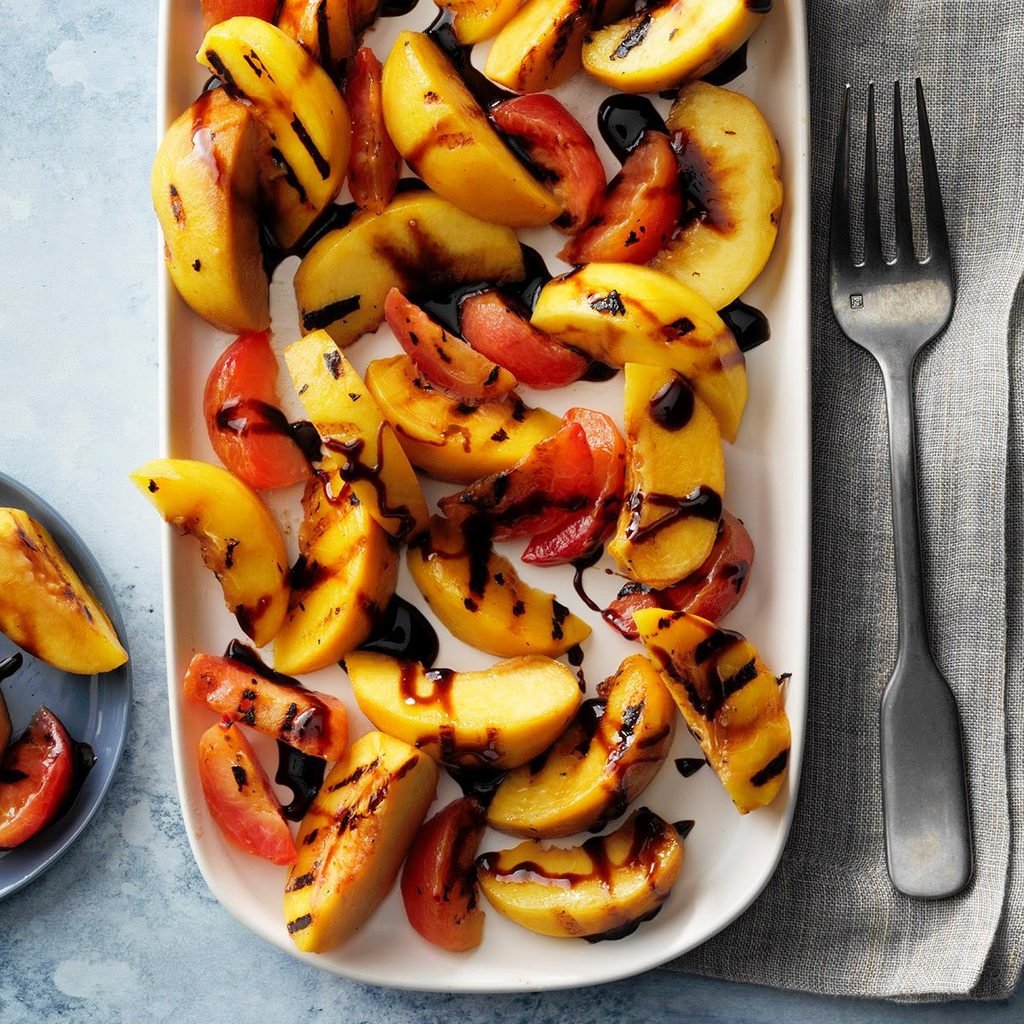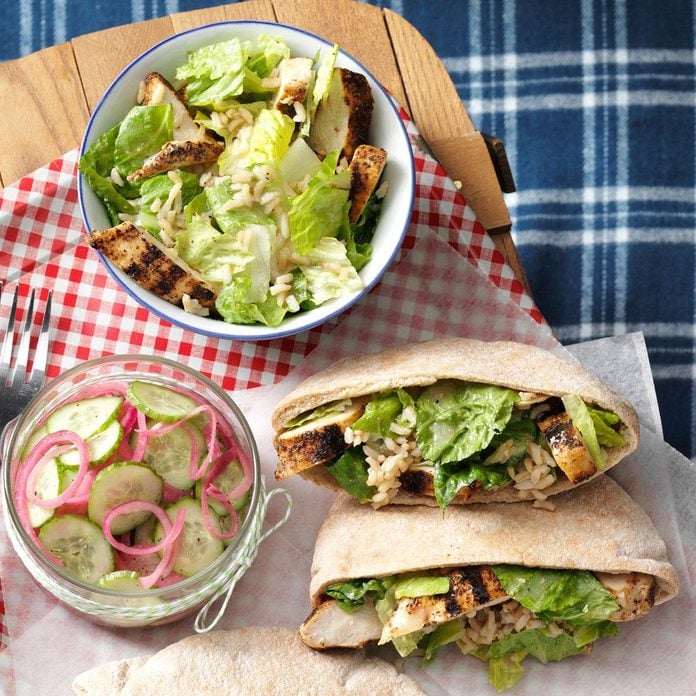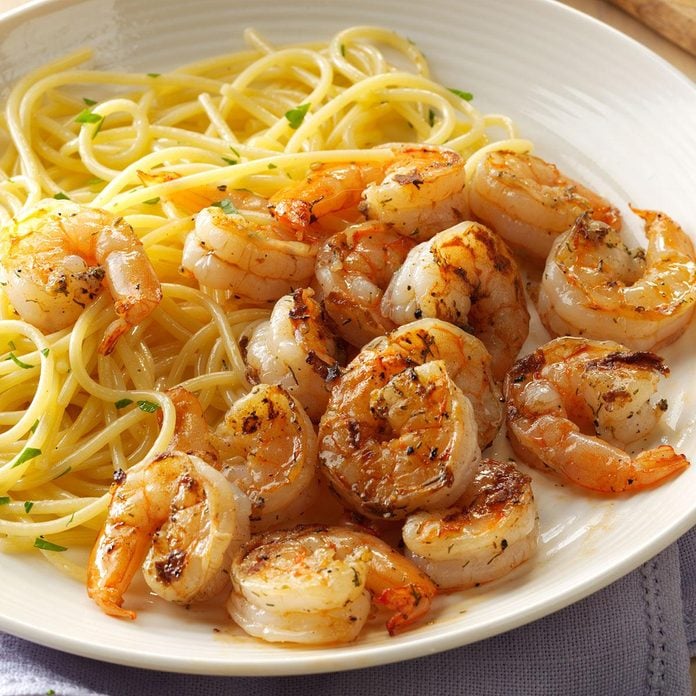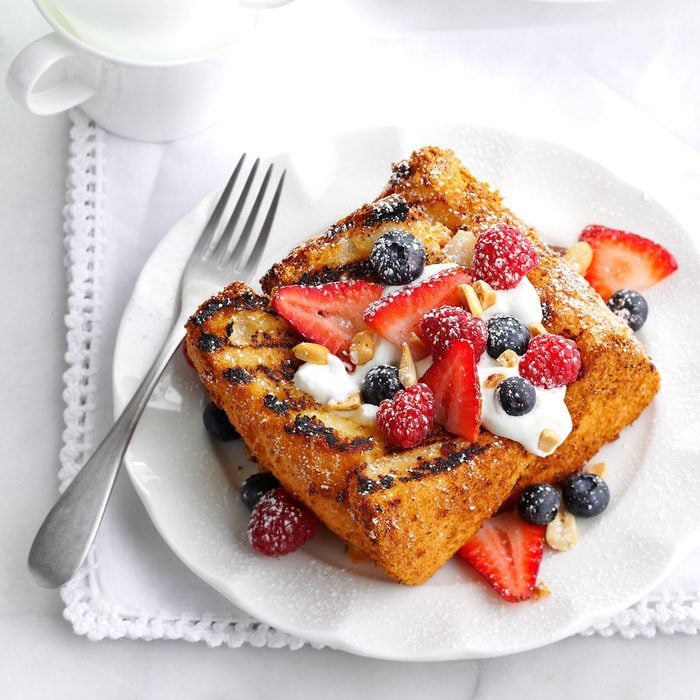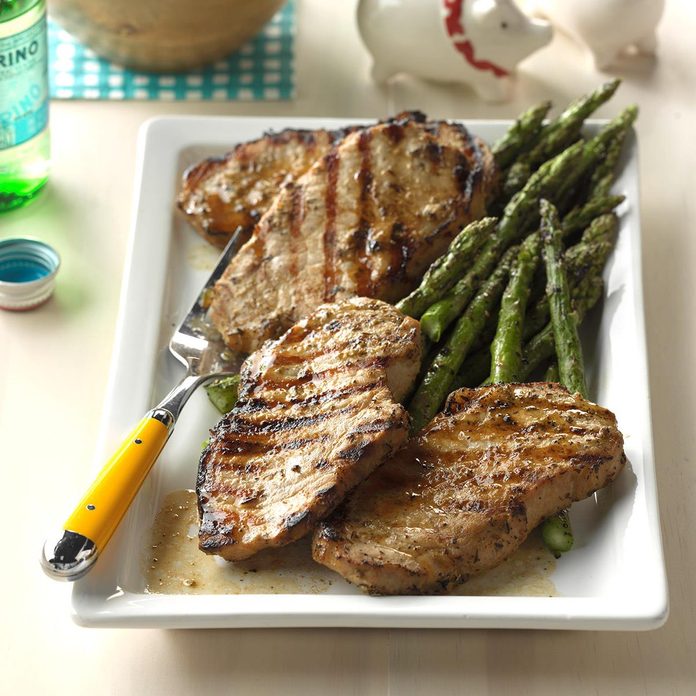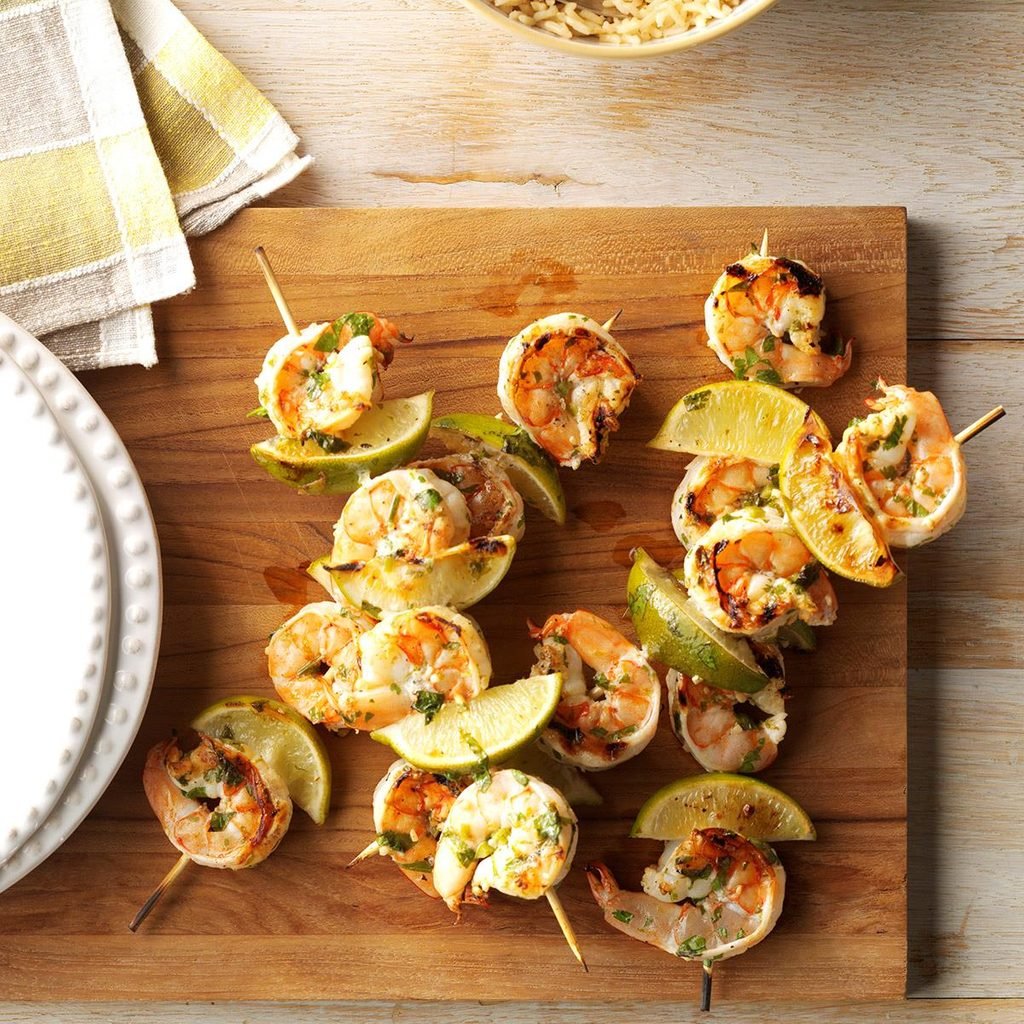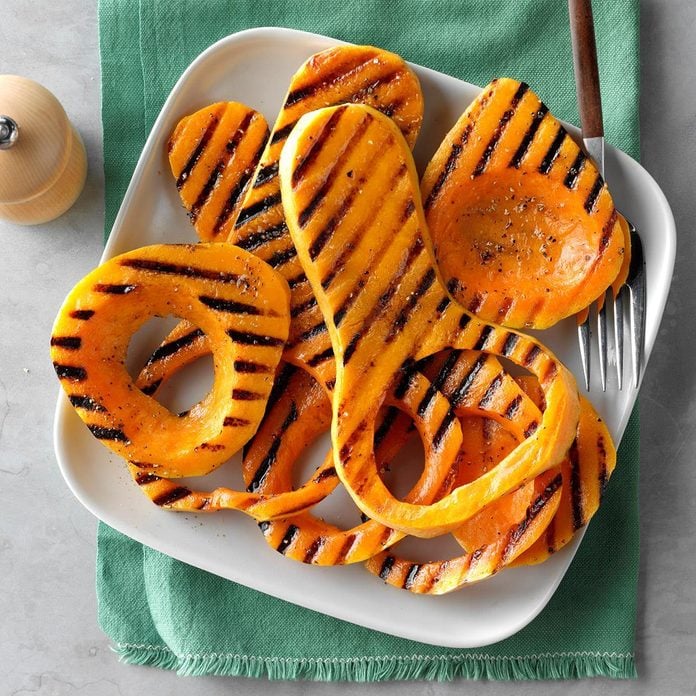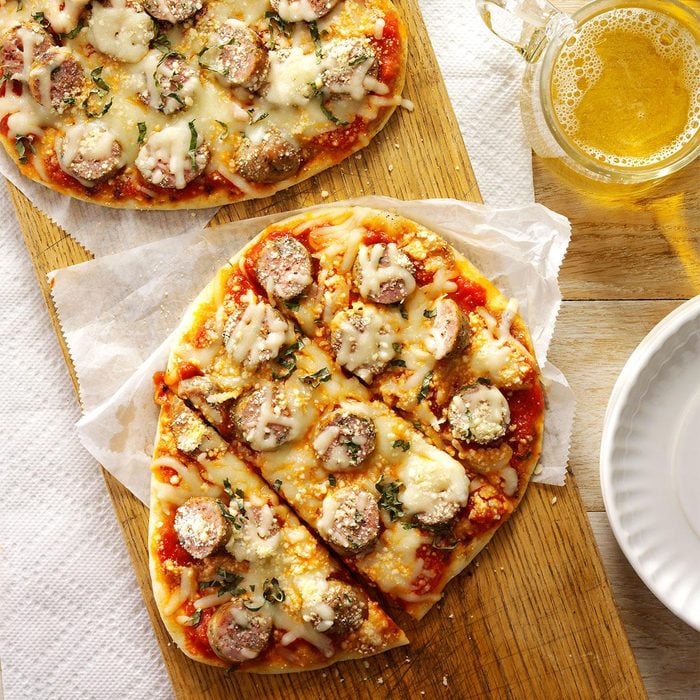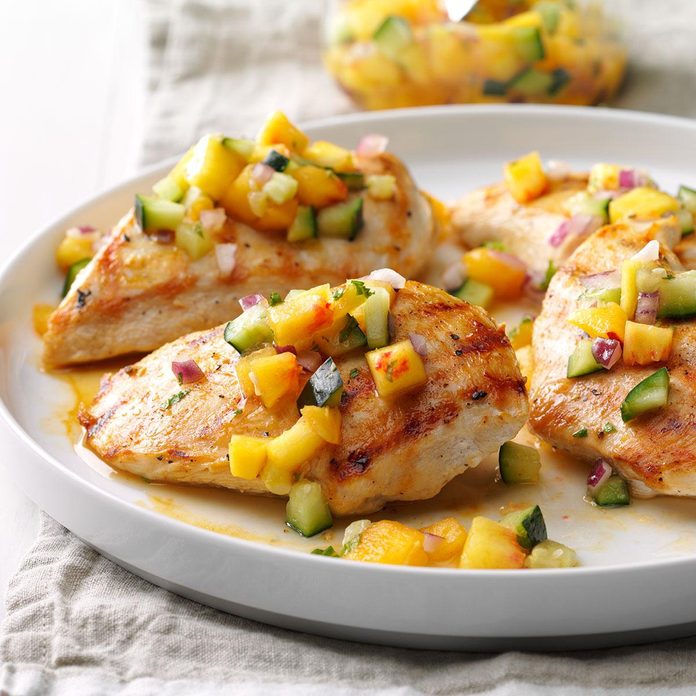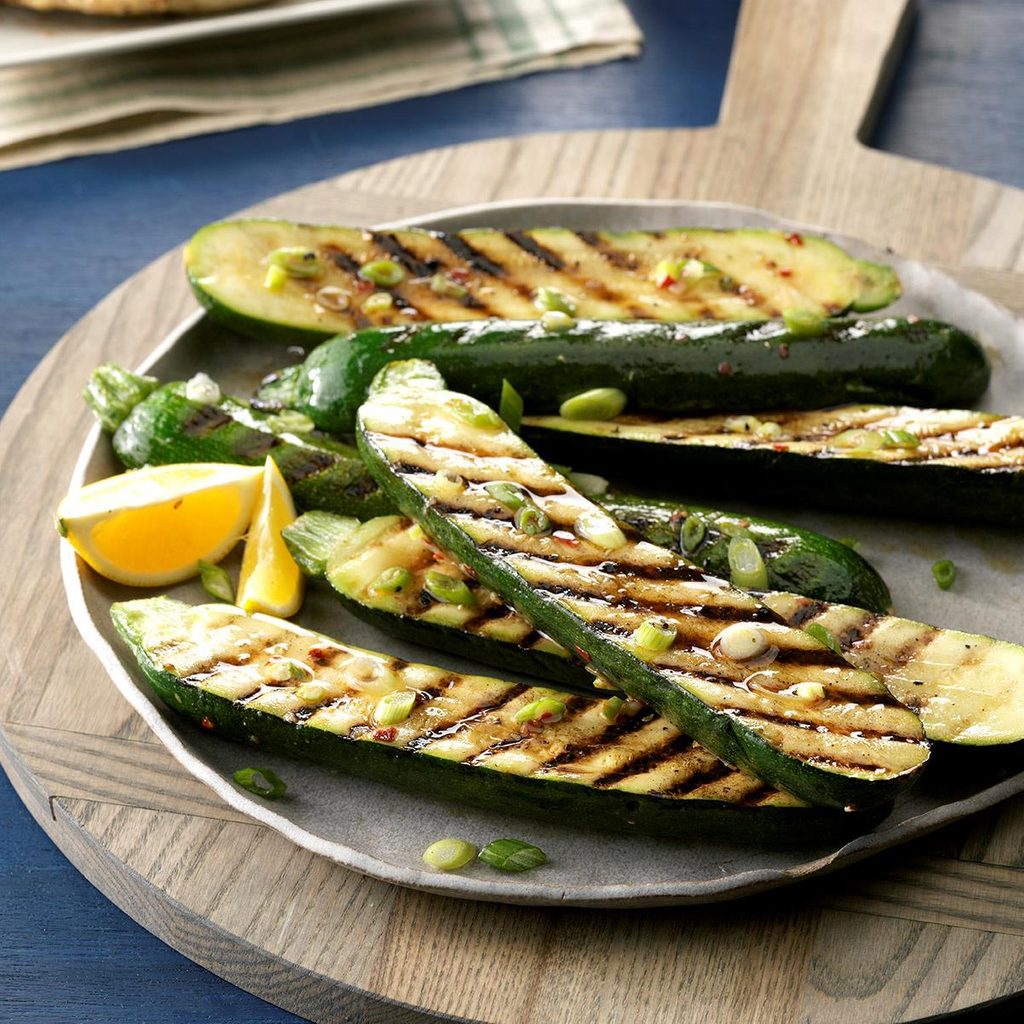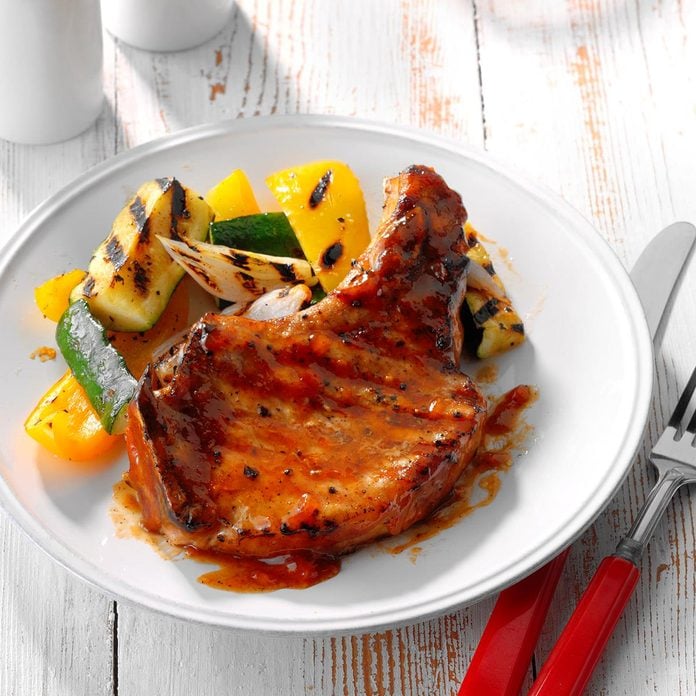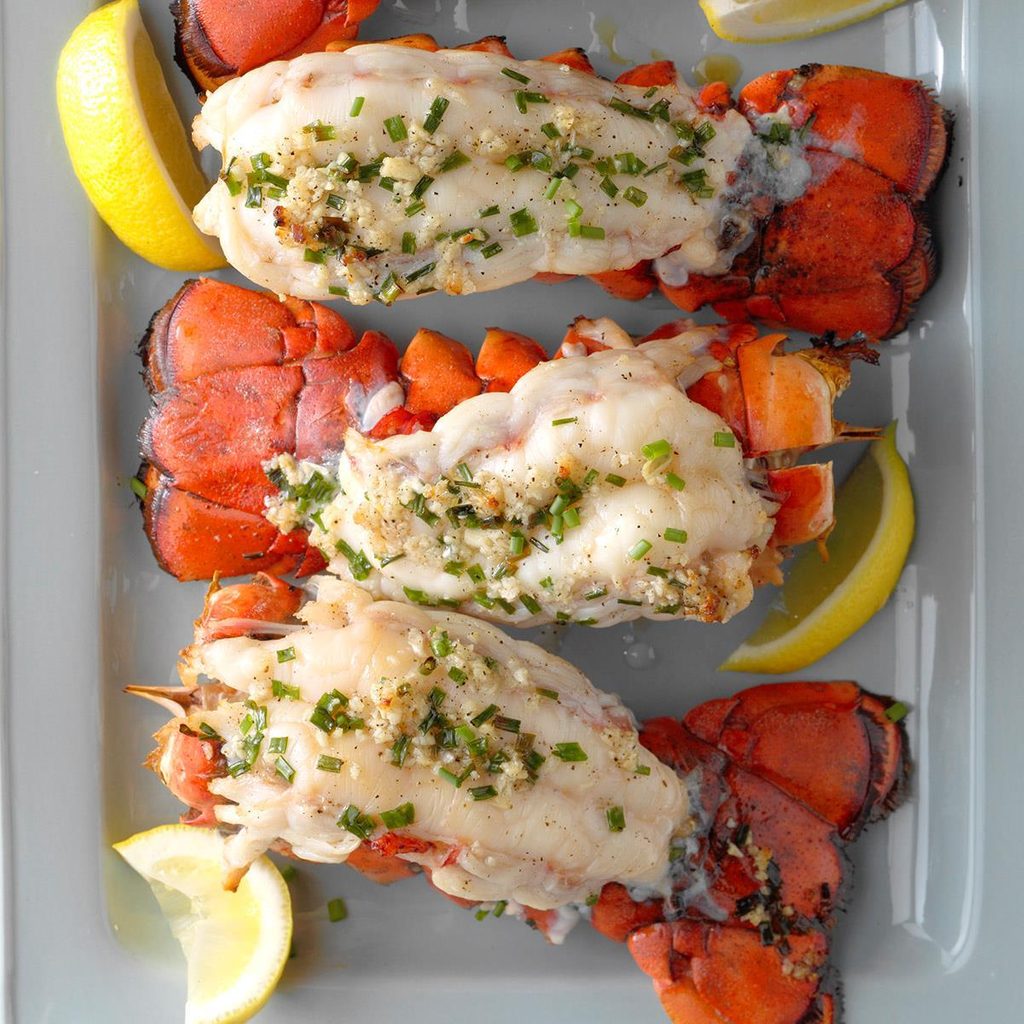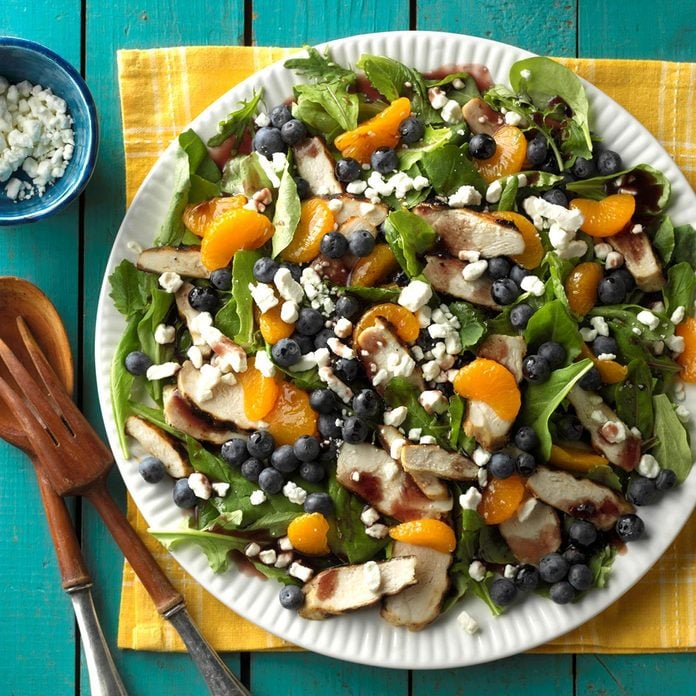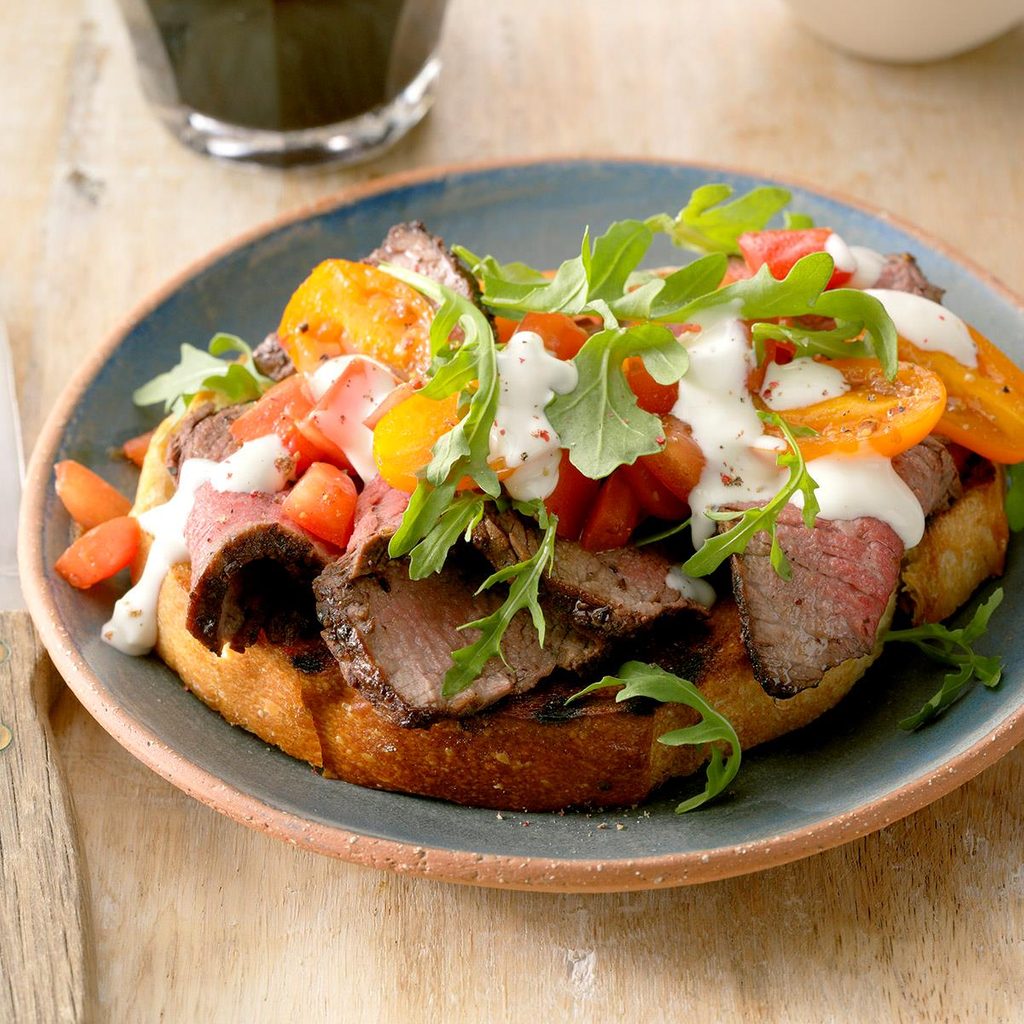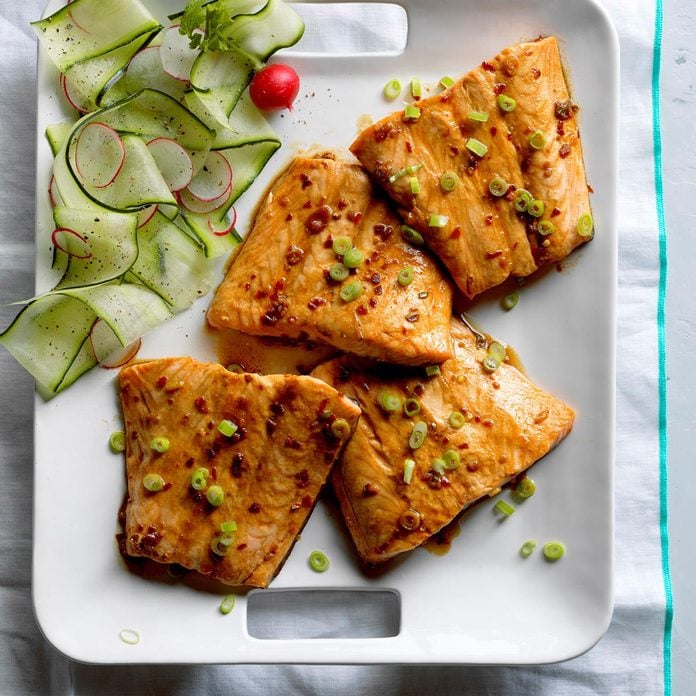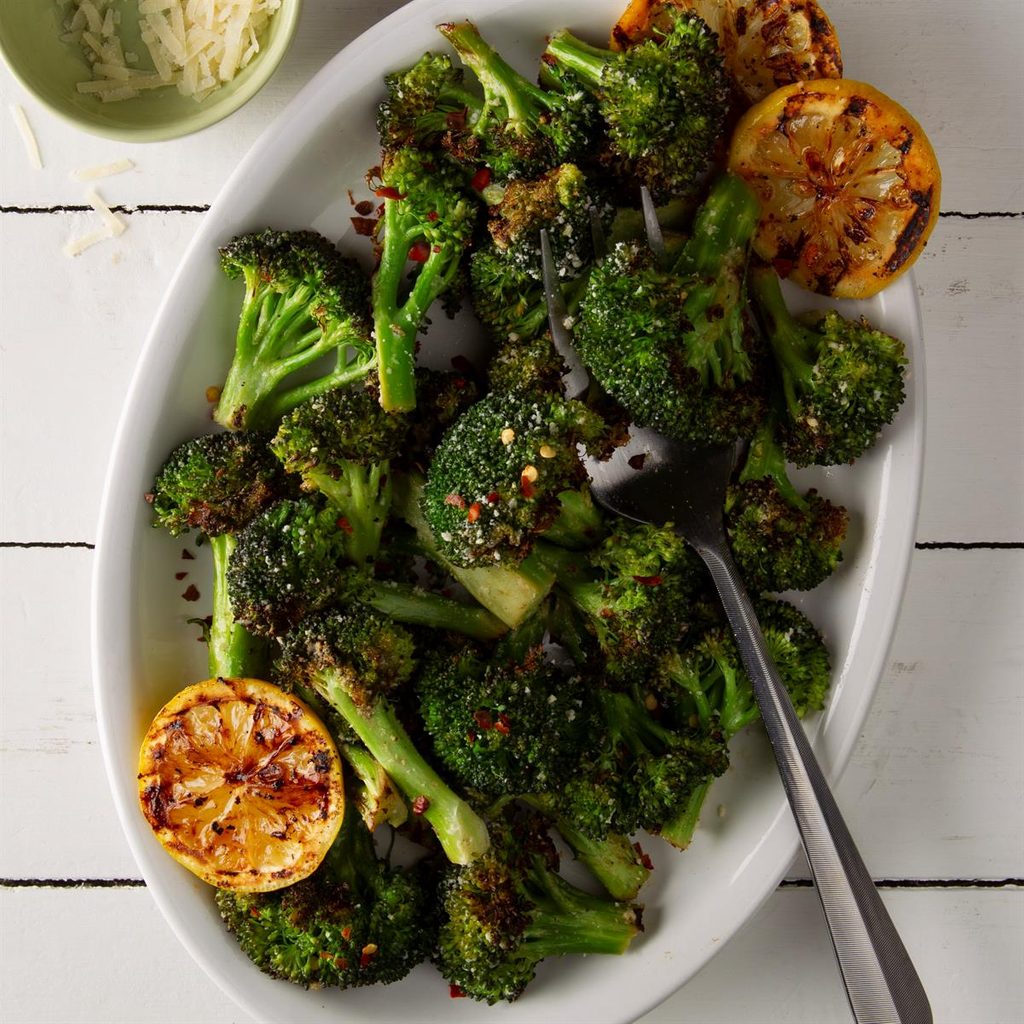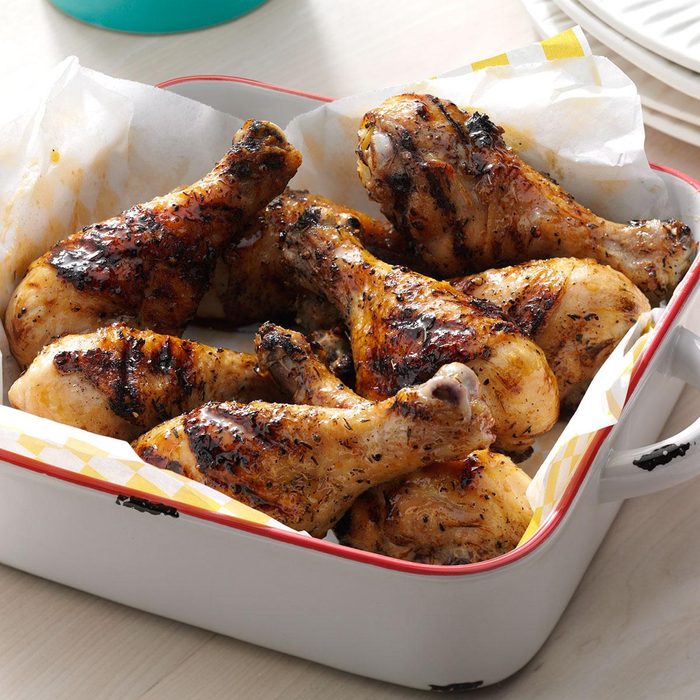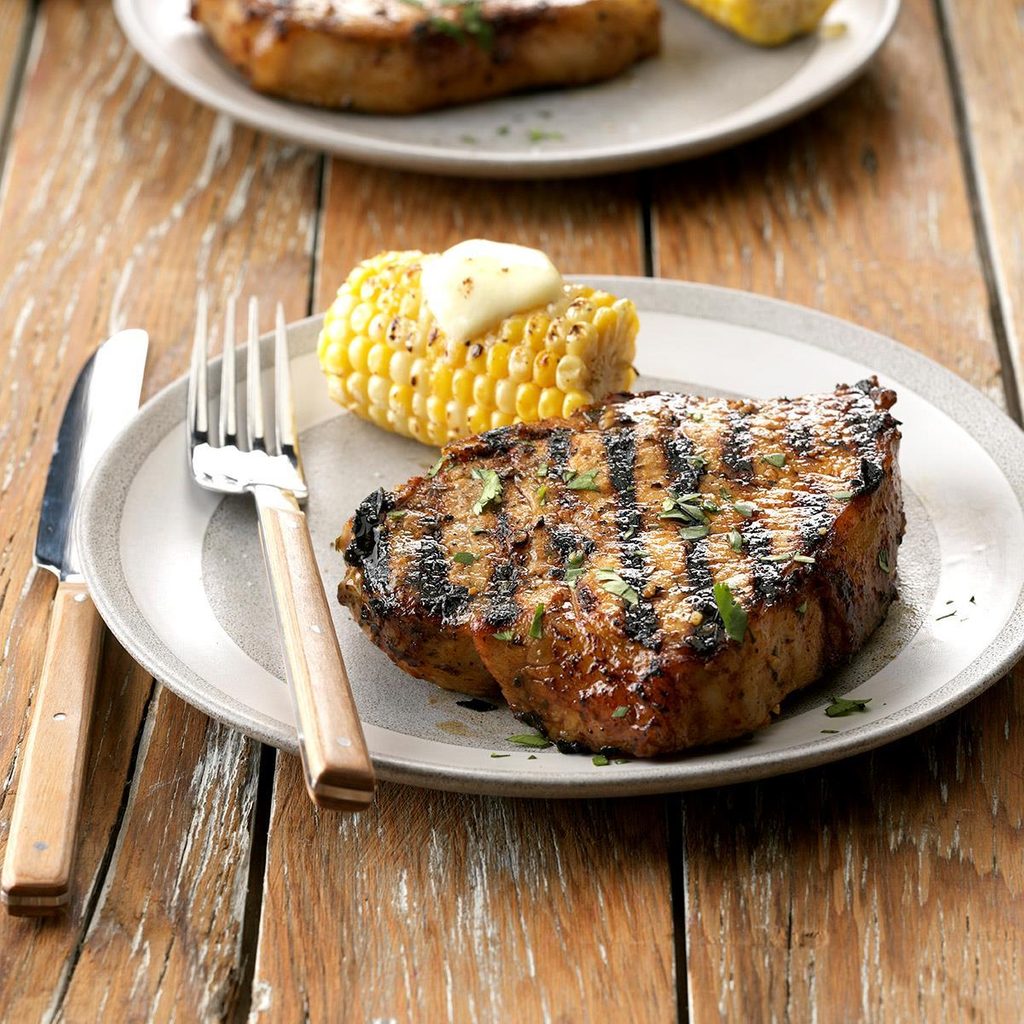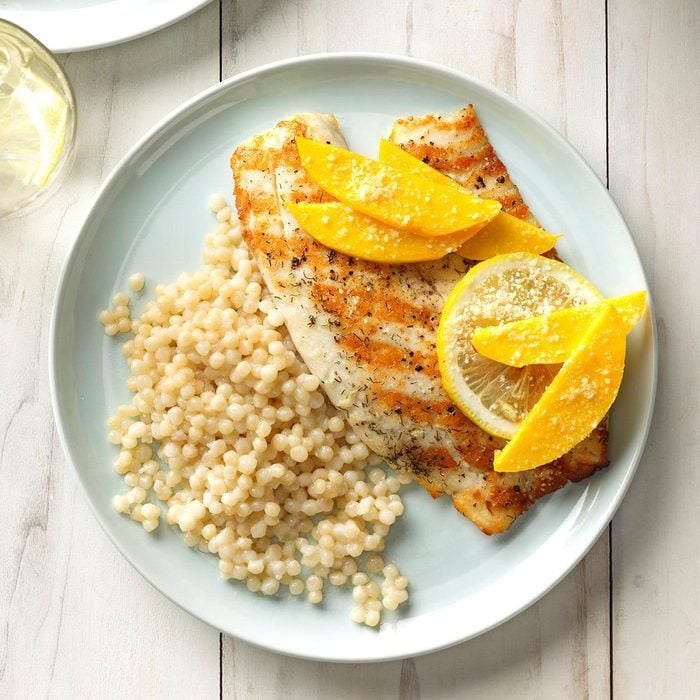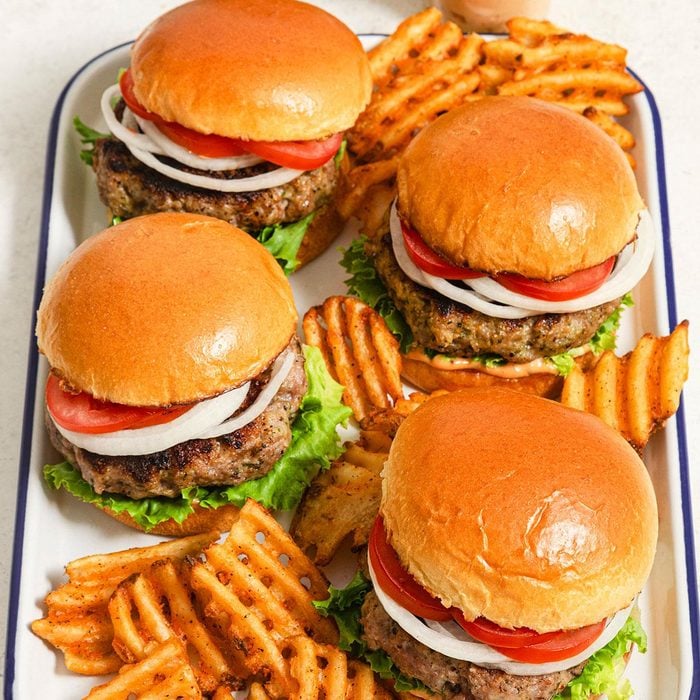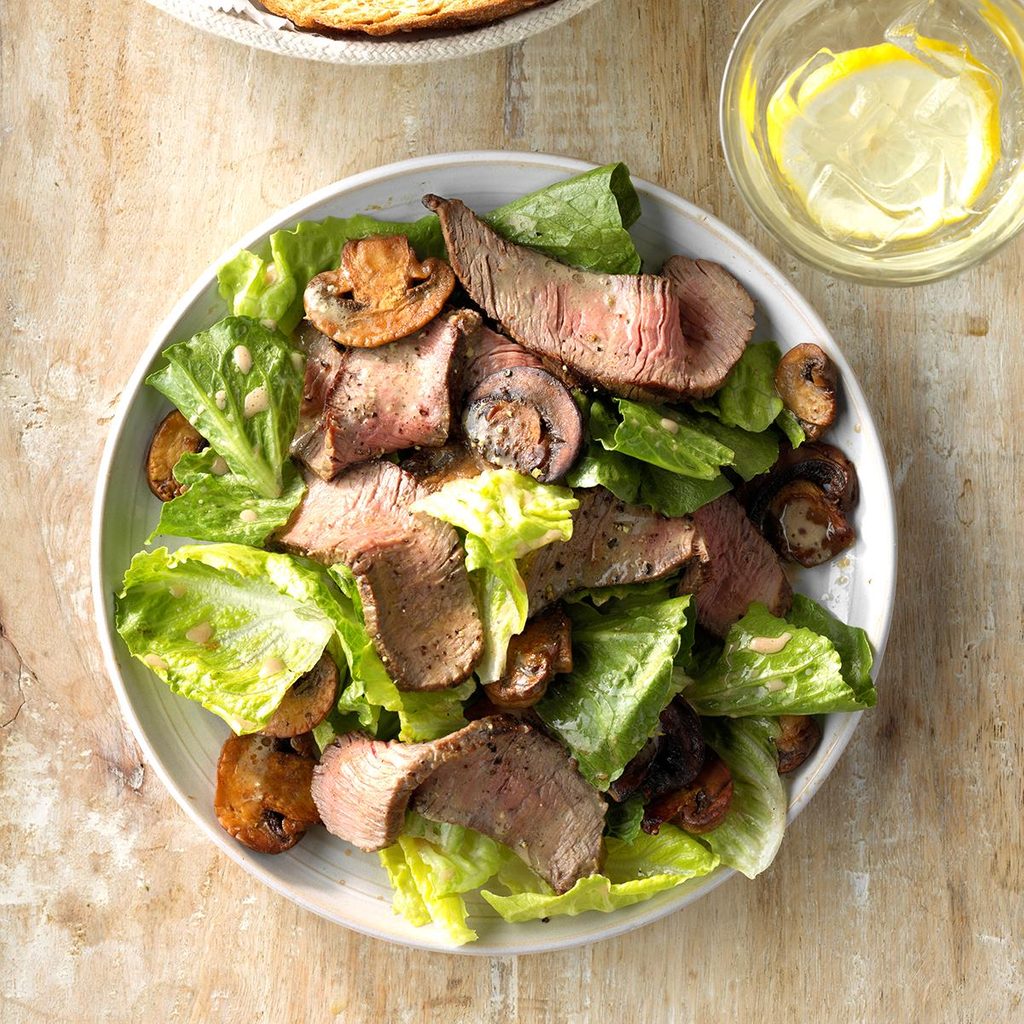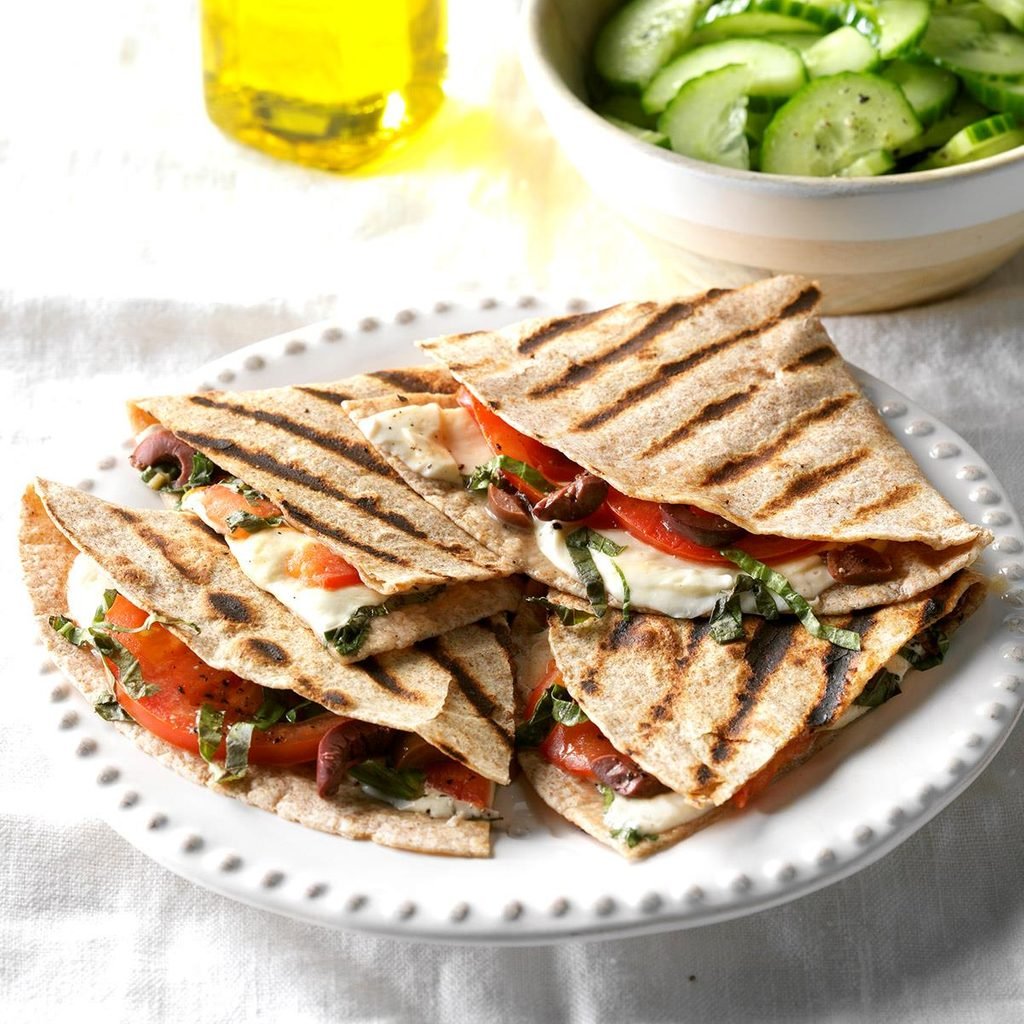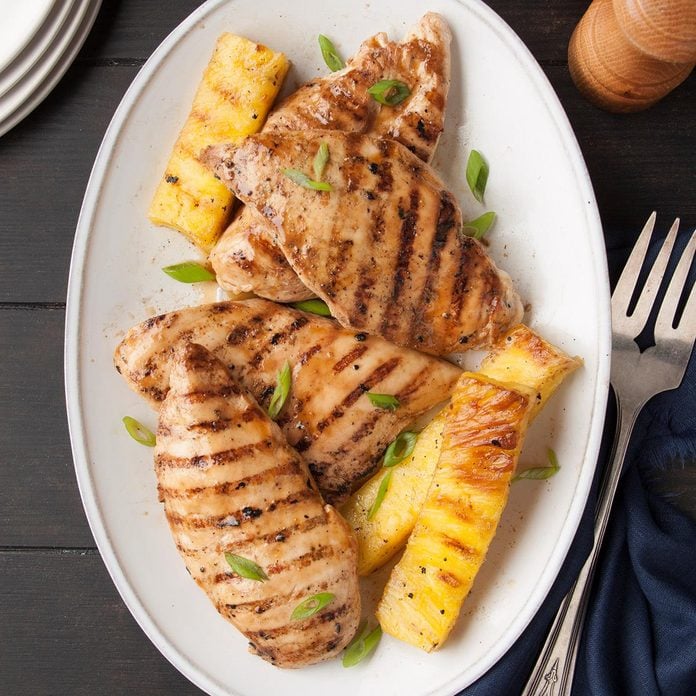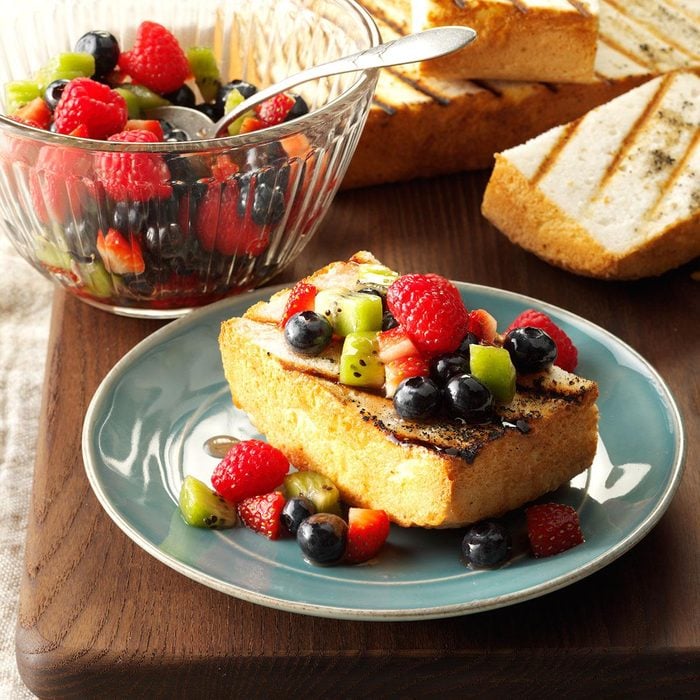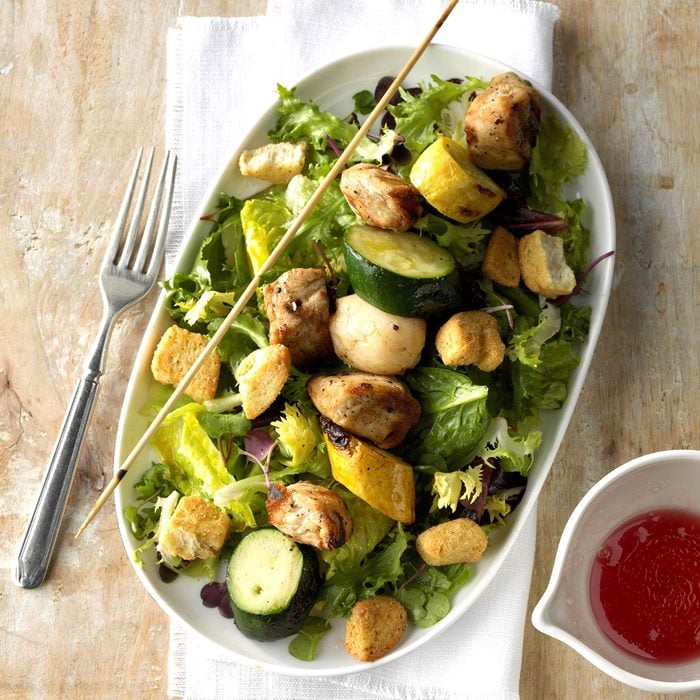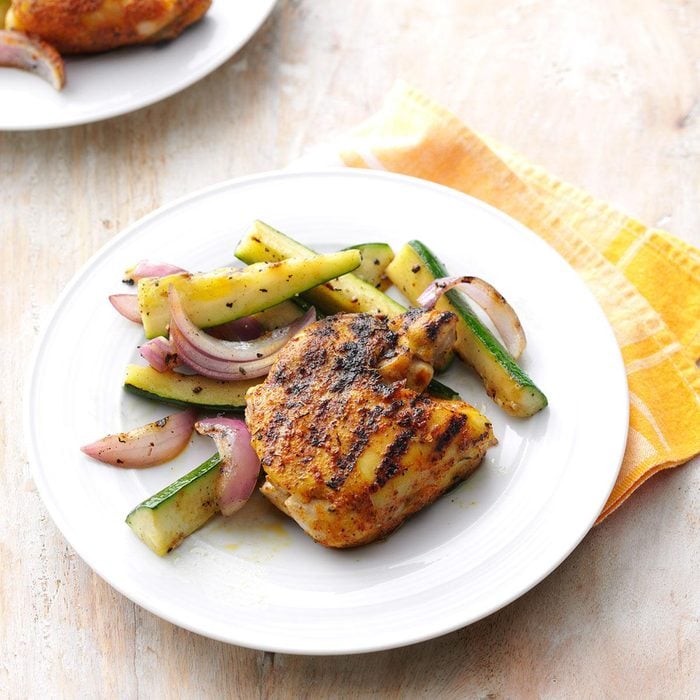Summertime grilling is one of our favorite activities. You can pretty much grill anything, so why heat up the house when you can hang outside and enjoy a beautiful day? Unfortunately, it doesn’t always work out that way. Sometimes the weather doesn’t cooperate, ruining our outdoor cooking plans. And anyone who lives in a condo or apartment knows that grills are considered a fire hazard, putting them on the no-go list for patio spaces.
Luckily, it’s super easy to learn how to grill indoors. No, we don’t mean taking your grill inside: Indoor grills are a specific type of grill that usually run off electricity. They’re lightweight, inexpensive and can be stored in a cabinet when not in use, making them the ideal alternative to a traditional grill.
Wondering what type of grill you should buy? Take a deep dive into the pros and cons of buying an indoor vs outdoor grill.
What Is an Indoor Grill?
An indoor grill is exactly what it sounds like: A grill that is designed for use indoors. Most models are electric-powered griddles that feature raised ridges on the griddle plate, leaving “grill marks” on the food as it cooks. The ridges also keep the food elevated from the grease, allowing it to drain off and reducing the overall fat content of the dish. Like electric griddles, they often come with several temperature settings, too.
You can also use a grill pan as an indoor grill. These pans are designed with the same raised ridges as the electric models, but they’re used on your stovetop. Learn more about the most common types of grills.
Different Types of Indoor Grills
Sorry, but you can’t just use your outdoor grill indoors. That’s actually really dangerous: It can start a fire or lead to carbon monoxide poisoning! Instead, you’ll want to use one of these types of grills designed for indoor use.
Open grill
An open grill is usually long and wide, with a grate that drains into a drip pan. It lays flat, so it looks like you’re using an outdoor grill. On the plus side, it holds more food than folding contact grills, but it also tends to take up more counter space. The food also takes longer to prepare because it only cooks on one side at a time (just like a regular grill).
Give it a try with the Hamilton Beach Electric Indoor Searing Grill.
Folding contact grill
These grills feature grill grates hooked together with a hinge, folding in half to cook your food from two sides at once. In addition to functioning as an indoor grill, they also double as a panini press. Their compact size takes up significantly less storage space than an open grill, but their space limits the amount of food you can cook in one session.
Give it a try with the Cuisinart 5-in-1 Griddler.
Grill pan
If you don’t have any space to store an extra appliance, pick up a grill pan instead. These pans are usually made with heavy-duty cast iron and work just as well as indoor electric grills. Some grill pans are reversible, featuring a smooth, flat griddle on one side and raised grill ridges on the other.
Give it a try with the Lodge Pre-Seasoned Cast-Iron Grill Pan.
How Does an Indoor Grill Work?
Electric grills work like electric stovetops. They have an element embedded into the cooking surface, heating it up when it’s turned on. The element covers the entire grill, so you may find you enjoy the even heating of an electric grill more than an outdoor grill. When the unit is turned off, the surface continues to stay hot for a short period. Because indoor grills don’t produce an actual flame, they’re safe for indoor use.
The Best Things to Cook on an Indoor Grill
An indoor grill might not be large enough to cook a rack of ribs or a whole pork shoulder, but it’s definitely capable of tackling any small grilling task. Use it to cook anything from burgers and chicken sandwiches to hot dogs and grilled brats. Vegetable dishes work really well on an indoor grill, too, so go meatless and use it to make vegetable kabobs, eggplant steaks or Mexican street corn.
Basically, anything you can cook on the direct heat side of the grill will work on an indoor grill. It’s not possible to use most indoor grills for indirect heat, but you could use your oven in a pinch.
Safety Tips
Indoor grills are generally safe to use, although it’s always a good idea to follow safety precautions. For starters, clean out the grease drip tray regularly. There is a small chance the grease can make its way to the heating element, starting a fire. You’ll also want to avoid exposing the cord to water, and be sure to unplug the unit before cleaning.
Can you use a charcoal grill indoors?
No, no and more no: It’s never okay to use an outdoor grill indoors. A charcoal grill’s live coals not only present a fire hazard, but they’ll also produce an uncontrollable amount of smoke for an indoor space. That can not only lead to smoke damage to your furniture, but it can also present several health risks.
How can I reduce smoke?
A big issue for indoor grillers is smoke. Smoke isn’t much of a problem outside, but no one wants to set off the smoke alarm! The best way to prevent smoke is to start with a clean grill. Debris and burnt-on bits can create a lot of smoke, and they don’t taste great, either. Another way to reduce smoke is to choose lean cuts of meat or trim off any excess fat, as the grease produces smoke when it drips onto the heating element.
Some indoor grills are “smokeless,” which means they have built-in fans. On other models, you’ll find that a small amount of smoke is unavoidable. Try positioning the grill underneath the hood vent in your kitchen. You can also use the grill near a window with a small fan to push any offending smoke outside.
 miodrag ignjatovic/Getty Images
miodrag ignjatovic/Getty Images
Put that indoor grill that's been hiding in your cabinet to work with these indoor grilling recipes! For these dishes, the cooking time and temperature will be the same for an indoor grill as it would be for an outdoor grill. Just make sure you're using an indoor grill with a lid (when needed) and a
food thermometer to check that meats are coming up to temperature.
These are the summer recipes we're most looking forward to.
Grilled Brussels SproutsDuring a beach vacation, in an effort to cook our entire meal outside on the grill, I made our not-so-simple veggie choice into a simple grilled side dish. For spicier sprouts, season with red pepper flakes —Tiffany Ihle, Bronx, New York
Grilled Chicken BurgersOut of all my indoor grill recipes, this is one of my favorites! These chicken burgers get a delicious hint of sweetness with tart apples mixed right into the patties. The cranberry-mayo spread takes it up a notch even further. —Debbie Gauthier, Timmins, Ontario
Lime and Sesame Grilled EggplantFresh vegetables make wonderful indoor grill recipes. My recipe's seasonings have an Asian theme, but the dish still makes me think Greek. —Allyson Meyler, Greensboro, North Carolina
Spicy Lemon Chicken KabobsWhen I see Meyer lemons in the store, it must be spring. I like using them for these easy chicken kabobs, but regular grilled lemons still add the signature smoky tang. —Terri Crandall, Gardnerville, Nevada
Zesty Grilled HamIf it's ham, my kids will eat it, but they like this kicked-up indoor grill recipe best of all. Even the small ones eat adult-sized portions, so be sure to make plenty. —Mary Ann Lien, Tyler, Texas
Ultimate Grilled Pork ChopsA little brining and a special dry rub go a long way to making the perfect pork chop. Once you've mastered how to cook thick pork chops, you'll be enjoying them all summer long. —Matthew Hass, Franklin, Wisconsin
Scrum-Delicious BurgersI'm not sure where this recipe originated, but it's one of my family's summertime favorites. I usually serve these juicy mushroom burgers when we have company. The guests rave about the flavorful cheesy topping. It's fun to serve a burger that's a little more special. —Wendy Sommers, West Chicago, Illinois
Grilled Garlic NaanIndian food is my all-time favorite and no meal is complete without some naan. I like to brush this indoor grill recipe for naan with lots of butter, garlic and a little chopped cilantro.—Jerry Gulley, Pleasant Prairie, Wisconsin
Fajita in a BowlPull out the skewers and take a stab at grilling peppers, onions and corn for an awesome steak salad that’s all summer and smoke. —Taste of Home Test Kitchen, Milwaukee, Wisconsin
Oktoberfest Brats with Mustard SauceI come from a town with a big German heritage, and each year we have a huge celebration for Oktoberfest. This recipe packs in all the traditional German flavors my whole family loves. —Deborah Pennington, Decatur, Alabama
Grilled Eggplant SandwichesGrill this eggplant, tomato and goat cheese sandwich to perfection...it makes a delicious meatless meal. —Jennifer Jaras, Corona, California
Grilled Stone Fruits with Balsamic SyrupGet ready to experience another side of stone fruits. Hot off the rack, these grilled nectarines practically melt in your mouth. —Sonya Labbe, West Hollywood, California
Chicken Caesar PitasHand-held and picnic friendly, these chicken-stuffed pockets pack a double dose of whole grains from brown rice and whole wheat pitas. The chicken can be made up to 2 days in advance for a fast-fix lunch. —Taste of Home Test Kitchen
Grilled Lemon-Dill ShrimpThis grilled shrimp is one of my go-to recipes when I stare at the freezer and draw a blank. Add veggies if desired, but grill them separately. —Jane Whittaker, Pensacola, Florida
Grilled Chicken and Mango SkewersThe inspiration for this recipe came from the charbroiled chicken skewers I used to enjoy while strolling along Calle Ocho in Miami on Sunday afternoons. Feel free to garnish them with sesame seeds or spritz them with fresh lime juice. —Wolfgang Hanau, West Palm Beach, Florida
Berried Treasure Angel Food CakeMy husband grills anything and everything—even dessert! With his gentle nudging, I came up with this simple recipe that takes just a few minutes to prepare, yet always impresses dinner guests. —Anita Archibald, Richmond Hill, Ontario
Greek Pork ChopsMy in-laws taught me a lot about cooking, so any time I come across a great new recipe, I enjoy making it for them. These bright, lemony chops quickly became a favorite. —Geri Lipczynski, Oak Lawn, Illinois
Cilantro Lime ShrimpA quick garlicky lime marinade works magic on these juicy shrimp. They come off the grill with huge flavors perfect for your next cookout. —Melissa Rodriguez, Van Nuys, California
Easy Grilled SquashThis is grilled butternut squash recipe is one of my favorite ways to cook with fresh produce. I usually make it when I am grilling steak or chicken. —Esther Horst, Monterey, Tennessee
Grilled Sausage-Basil PizzasWe love
basil recipes, and these easy little pizzas are a wonderful change of pace from the classic cookout menu. Let everybody go crazy with the toppings. —Lisa Speer, Palm Beach, Florida
Chicken with Peach-Cucumber SalsaTo keep our kitchen cool, we grill chicken outdoors and serve it with a minty peach salsa that can easily be made ahead. —Janie Colle, Hutchinson, Kansas
Grilled Zucchini with OnionsWondering what to do with all your garden-grown zucchini in the summer? Give it a sizzle and a little heat with this healthy side. It’s also an easy recipe to double or triple for summer cookouts. —Alia Shuttleworth, Auburn, California
Fruit-Glazed Pork ChopsHere’s a fast and simple way to grill chops in half an hour. Other fruit preserves can be easily substituted. These are also nice broiled in the oven. —Edie DeSpain, Logan, Utah
Grilled Lobster TailsI had never tried grilling lobster tails at home until I tried this convenient and deliciously different recipe. It turned out amazing, and has left me with little reason to ever order grilled lobster tail at a restaurant again. Here's how to cook lobster tails on the grill. —Katie Rush, Kansas City, Missouri
Grilled Chicken Salad with Blueberry VinaigretteWe love adding grilled chicken to our salads in the summer, but the real star here is the vinaigrette made with blueberry preserves and maple syrup. This salad goes great with a fresh baguette and a frosty glass of minted lemonade. —Susan Gauthier, Falmouth, Maine
Grilled Steak Bruschetta Salad for 2Fire up the grill for this tasty salad. The meat will be done in a snap, leaving you more time to enjoy the summer evening.
—Devon Delaney, Princeton, New Jersey
Firecracker Grilled SalmonLet this sensational firecracker salmon perk up dinner tonight. With a super flavorful glaze that kicks you right in the taste buds, this weeknight dish is anything but boring. —Melissa Rogers, Tuscaloosa, AL
Grilled BroccoliI started using this recipe in 1987, when I began cooking light, and it's been a favorite side dish ever since. With its lemon and Parmesan flavors, it once took second place in a cooking contest. —Alice Nulle, Woodstock, Illinois
Honey Thyme Grilled ChickenFor grilling chicken, I wanted a marinade different from barbecue sauce, so I pulled out some honey and thyme. If you have time, let the chicken marinate awhile to boost flavor. —Noel Bigelow, Alexandria, Virginia
Grilled Eggplant Parmesan StacksWe love eggplant Parmesan, but when it’s hot outside, the dish feels too heavy. Grilled eggplant slices topped with tomato, mozzarella and Parm satisfy everyone. —Joann Parlin, Little Egg Harbor, New Jersey
Lime and Garlic Grilled Pork ChopsThese juicy chops are a sizzling good reason for the summer grill. The pork is so tender and with a zing from lime, garlic, cilantro and ginger, it tastes so amazing. —Deborah Yasbah, North Middletown, New Jersey
Grilled Tilapia with MangoHere's a new twist on tilapia that I created for my wife. She enjoys the combination of mango with Parmesan. Somehow it tastes even better outside on the deck with a cold glass of iced tea. —Gregg May, Columbus, Ohio
Pork BurgersWe live on a working hog farm and love this savory, tasty burger. Everyone will love these burgers—even if your pork comes from the grocery store, not the farm! —Dawnita Phillips, Drexel, Missouri.
Grilled Steak and Mushroom SaladMy husband loves this salad, especially during summer. He says he feels as if he's eating a healthy salad and getting his steak, too! I always serve it with some fresh homemade bread. —Julie Cashion, Sanford, Florida
Grilled Caprese QuesadillasHere's a quick and easy summer lunch that makes great use of garden-grown tomatoes. Feel free to make your quesadillas heartier by adding grilled chicken. —Amy Mongiovi, Lititz, Pennsylvania
Grilled Pineapple ChickenA trip to Hawaii is easy with this juicy grilled pineapple chicken. Simply give it a quick marinade, fire up the grill and let it sizzle. We love this low-carb recipe! —Charlotte Rogers, Virginia Beach, Virginia
Grilled Angel Food Cake with Fruit SalsaWhen I need dessert fast, I go with angel food cake. Mix fruit salsa ahead of time, and pop the cake on the grill. —Glorimar Jimenez, Indianapolis, Indiana
Summer Turkey KabobsThese kabobs let you enjoy Thanksgiving flavors at any time of the year! We enjoy grilling them in the summer. —Angela Mathews, Fayetteville, New York
Spice-Rubbed Chicken ThighsFor our must-have meal, we roast chicken using bone-in, skin-on thighs. This version without skin and bones has a zesty rub of turmeric, paprika and chili powder. —Bill Staley, Monroeville, Pennsylvania
